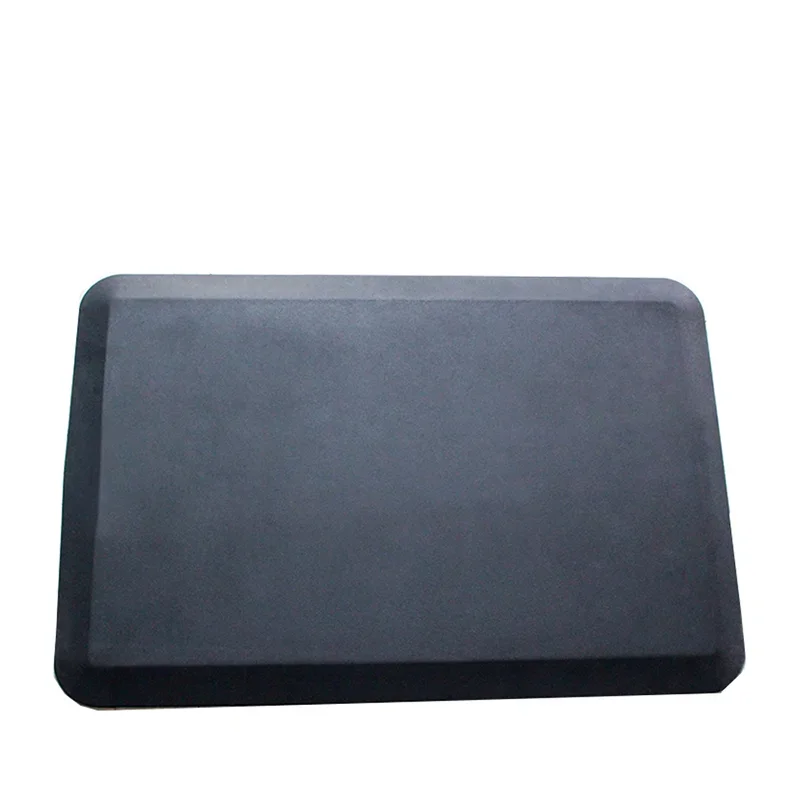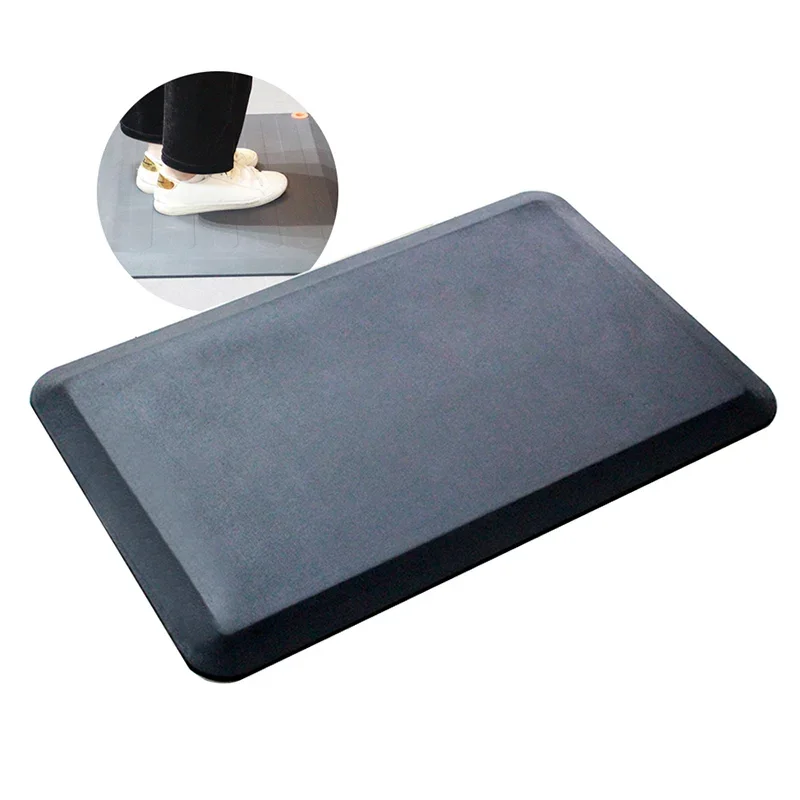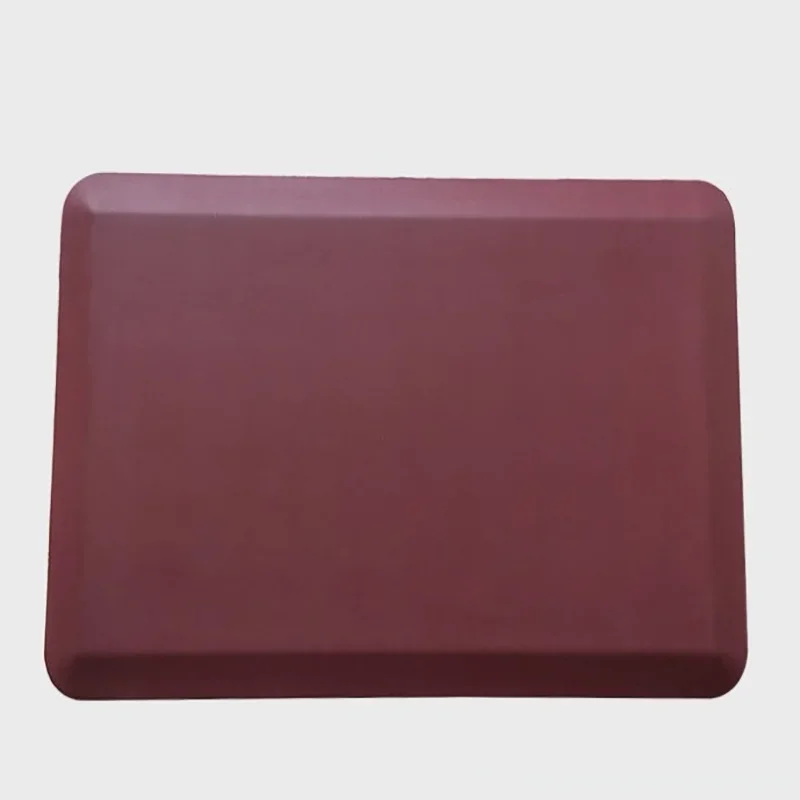Anti Fatigue Floor Mat: Enhancing Comfort and Productivity
In today's fast-paced world, where long hours of standing or walking are common in various industries, the need for comfortable and supportive flooring solutions has become increasingly important. This is where anti-fatigue floor mats come into play. These mats are designed to reduce the discomfort and fatigue caused by prolonged standing, ultimately enhancing productivity and overall well-being. In this article, we will explore the various aspects of anti-fatigue floor mats, including their functionality, benefits, types, customization options, applications, factors to consider when choosing, and installation and maintenance tips.
Understanding Anti Fatigue Floor Mats
Anti-fatigue floor mats are specially designed mats that provide cushioning and support to individuals who stand for extended periods. These mats are made from materials that offer resilience and shock absorption, which help to reduce the strain on the feet, legs, and lower back. The primary purpose of these mats is to alleviate the discomfort and fatigue associated with standing on hard surfaces, such as concrete or tile floors.
How Anti Fatigue Floor Mats Work
Anti-fatigue floor mats work by utilizing various mechanisms to provide comfort and support. The key feature of these mats is their ability to distribute the weight of the body evenly, reducing pressure points and minimizing the strain on specific areas. The materials used in these mats, such as rubber or foam, offer cushioning and shock absorption, which help to reduce the impact on the feet and joints. Additionally, the mats often have a textured surface that provides traction, preventing slips and falls.

Benefits of Anti Fatigue Floor Mats
The use of anti-fatigue floor mats offers numerous benefits, both for individuals and businesses. Firstly, these mats significantly reduce the discomfort and fatigue caused by standing for long periods, leading to increased productivity and improved overall well-being. By providing cushioning and support, these mats help to alleviate foot, leg, and lower back pain, reducing the risk of musculoskeletal disorders. Moreover, anti-fatigue mats improve blood circulation, as they encourage subtle movements of the leg muscles, preventing stiffness and swelling. Additionally, these mats offer insulation, keeping the feet warm in cold environments and reducing the risk of cold-related injuries. Lastly, anti-fatigue mats also provide a safety feature, as their textured surface prevents slips and falls, reducing the risk of workplace accidents.
Types of Anti Fatigue Floor Mats
There are various types of anti-fatigue floor mats available in the market, each catering to specific needs and preferences. The most common types include:
Rubber Mats: These mats are made from durable rubber materials, offering excellent resilience and shock absorption. They are suitable for heavy-duty environments, such as factories or workshops, as they can withstand heavy foot traffic and provide long-lasting support.
Foam Mats: Foam mats are made from soft and lightweight materials, providing a comfortable and cushioned surface. They are ideal for areas where individuals require prolonged standing, such as kitchens or retail counters.
Gel Mats: Gel mats are filled with a gel-like substance that offers superior cushioning and support. These mats are highly effective in reducing fatigue and are commonly used in healthcare settings or laboratories.
Interlocking Mats: Interlocking mats are designed to cover larger areas and can be easily connected to create a customized floor surface. These mats are versatile and can be used in various settings, such as gyms or assembly lines.
Custom Made Anti Fatigue Floor Mats
In addition to the standard types of anti-fatigue floor mats available, there is also the option of custom-made mats. Customization allows businesses to tailor the mats to their specific requirements, such as size, shape, color, and branding. This is particularly beneficial for companies that want to incorporate their logo or specific design elements into the mats, enhancing their brand image. Custom-made mats can also be designed to fit unique spaces or accommodate specific equipment, ensuring maximum coverage and functionality.

Applications of Anti Fatigue Floor Mats
Anti-fatigue floor mats have a wide range of applications across various industries and settings. Some common applications include:
Industrial Settings: Anti-fatigue mats are widely used in industrial settings, such as manufacturing plants, warehouses, and assembly lines. These mats provide support and comfort to workers who are required to stand for long periods, reducing fatigue and improving productivity.
Retail Environments: In retail environments, such as supermarkets or malls, employees often have to stand for extended periods. Anti-fatigue mats help to alleviate the discomfort and fatigue associated with standing on hard floors, allowing employees to focus on their tasks and provide better customer service.
Healthcare Facilities: Healthcare facilities, such as hospitals or clinics, often have areas where medical professionals need to stand for long periods, such as operating rooms or nurses' stations. Anti-fatigue mats in these settings help to reduce the strain on healthcare workers' feet and legs, allowing them to concentrate on patient care.
Commercial Kitchens: In commercial kitchens, chefs and kitchen staff are required to stand for hours while preparing meals. Anti-fatigue mats provide cushioning and support, reducing the risk of foot and leg pain and improving the efficiency of kitchen operations.
Factors to Consider When Choosing Anti Fatigue Floor Mats
When selecting anti-fatigue floor mats, there are several factors to consider to ensure the mats meet the specific needs of the environment and users. These factors include:
Material: Different materials offer varying levels of comfort, durability, and resistance to chemicals or oils. It is essential to choose a material that suits the specific requirements of the environment.
Thickness: The thickness of the mat determines its cushioning and shock absorption capabilities. Thicker mats provide more support but may not be suitable for areas with low clearance, such as doorways.
Size and Shape: The size and shape of the mats should be chosen to fit the available space and accommodate the movement of individuals. Customization options are available for businesses with unique requirements.
Surface Texture: The surface texture of the mat affects its traction and slip resistance. Mats with a textured surface provide better grip and prevent accidents.
Cleaning and Maintenance: Consider the ease of cleaning and maintenance of the mats, as they should be kept clean and in good condition for optimal performance.
Installation and Maintenance Tips
Proper installation and maintenance of anti-fatigue floor mats are crucial to ensure their longevity and effectiveness. Here are some tips to consider:
Clean the floor thoroughly before installing the mats to remove any debris or dirt that may affect their performance.
Ensure the mats are placed on a flat and stable surface to prevent tripping hazards.
Use adhesive or double-sided tape to secure the mats in place, especially in high-traffic areas.
Regularly clean the mats using mild soap and water to remove dirt and stains. Avoid using harsh chemicals that may damage the mats.
Inspect the mats regularly for any signs of wear or damage. Replace any worn-out or damaged mats promptly to maintain their functionality.

Conclusion
Anti-fatigue floor mats are an essential investment for businesses and individuals who require prolonged standing or walking. These mats provide comfort, support, and safety, ultimately enhancing productivity and overall well-being. By understanding the functionality, benefits, types, customization options, applications, factors to consider when choosing, and installation and maintenance tips, businesses can make informed decisions when selecting anti-fatigue floor mats. With the right mats in place, individuals can experience reduced fatigue, improved comfort, and increased productivity, leading to a healthier and more efficient work environment.
Enhancing Workplace Safety and Comfort with Anti-Fatigue Floor Mats
- Art
- Causes
- Crafts
- Dance
- Drinks
- Film
- Fitness
- Food
- Παιχνίδια
- Gardening
- Health
- Κεντρική Σελίδα
- Literature
- Music
- Networking
- άλλο
- Party
- Religion
- Shopping
- Sports
- Theater
- Wellness


